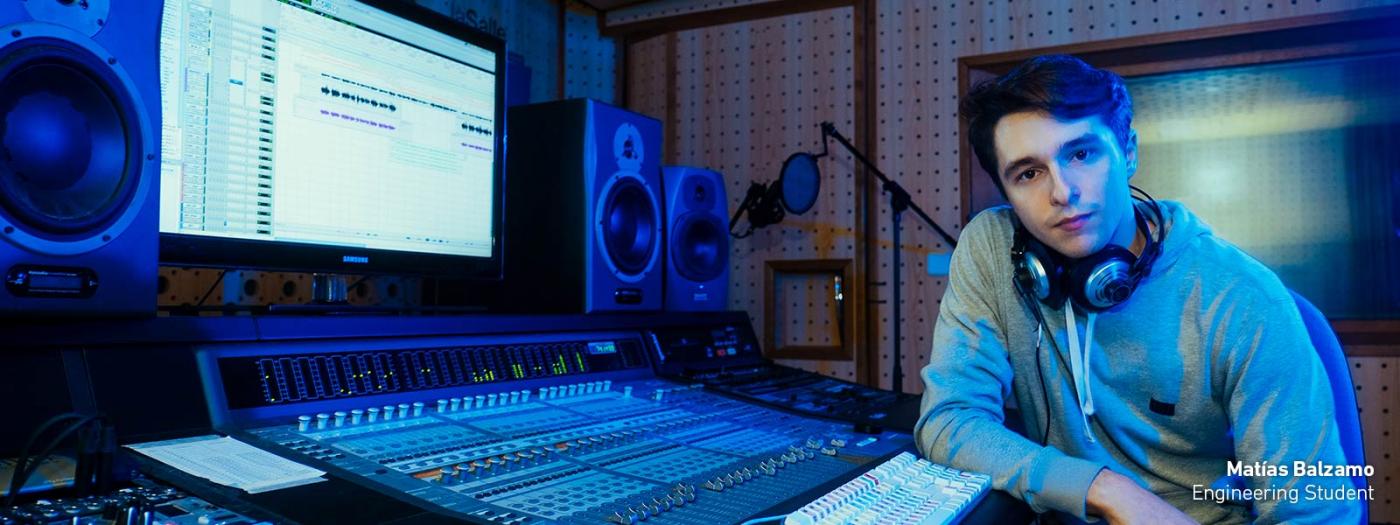The course aims to familiarize students with the basic concepts of audio and vibroacoustics.
The first semester presents a straightforward introduction to various audio concepts that encompass everything from the decibel scale and the characterization of harmonic acoustic waves to the description of various aspects of physiological and psychological acoustics. The basic theory of transducers is also introduced, both of receivers (essentially microphones and accelerometers) and emitters (speakers).
The second semester presents a more physical and mathematical aspect, and addresses the foundations of acoustics and linear vibrations. It begins with vibrations, first analyzing discrete systems of two degrees of freedom without damping, in free and forced regimes. It then moves on to continuous systems, considering the vibration of strings and membranes. Next, the wave equation in fluids is considered and the propagation of sound in ducts and the radiation of noise in the open air are studied. Finally, the generation and radiation of noise by vibrating surfaces is addressed.
Titular Professors
Some calculus and algebra basic knowledge is required such as trigonometry, integration theory and derivatives, differential equations, problem matrix formulation, determinants and inverse matrices computation.
It is highly recommended to attend to this course at the same time that Physics, Statistics and Mathematical Analysis and Signal and Transmission Systems courses.
The subject has three defined learning outcomes:
- Knowledge of the mechanisms of generation, propagation and measurement of acoustic waves and vibrations
- Knowledge of the mechanisms of human perception of sound
- Knowledge of the forms of characterization and use of electroacoustic devices (speakers and microphones)
With all this, the aim is to prepare students with the necessary knowledge to tackle more specific areas related to acoustics: room acoustics, acoustic measurements, electroacoustics, acoustic engineering, environmental acoustics.
SEMESTER 1: INTRODUCTION TO AUDIO
1. Introduction: Basic concepts of sound
2. Physiological and psychological acoustics
3. Acoustic transducers
SEMESTER 2: INTRODUCTION TO VIBROACOUSTICS
4. Continuous mechanical systems
5. Sound waves in fluid media
6. Spherical waves in a free field
7. Sound radiation
The subject incorporates the following training activities:
- Classroom presentation of the concepts and procedures associated with the module, using the lesson method
- Student personal study and work
- Laboratory work
- Personal dedication to laboratory practices
- Assessment activities
The classroom activity focuses mainly on the theoretical explanation of the topics by the teacher in continuous dialogue with the students. There is also a discussion and group exercises during class time, which is complemented by the proposal of new exercises for personal study.
Theoretical training is complemented by the carrying out of laboratory experiments in groups of two or three students in which the preparation of an explanatory report of the activities carried out and the results obtained is required.
The evaluation of the subject is done through exams, controls or exercises done in class, reports or exercises done in the laboratory and finally the development and presentation of the practices.
More specifically, the following types of evaluation are established:
- Continuous evaluation based on all the exercises done in class, the completion of the laboratory practices and the two control point exams in the middle of each semester.
- Ordinary evaluation through personal examination at the end of each semester plus the results of the continuous evaluation.
- Extraordinary evaluation during the month of July for those who have not reached the appropriate level of the ordinary evaluation.
Each semester must be passed separately.
The final grade for the subject will be the arithmetic average of the two semesters.
The grade for each semester is the result of the Continuous Assessment (40%) and the end-of-semester exam (60%). Anyone who does not participate in the continuous assessment will lose this 40%. Therefore, they will only be able to pass if they get a grade higher than 8 on the exam.
If the semesters are not passed, they will have to take an extraordinary exam. This exam must be passed with a grade greater than or equal to 5, not counting the continuous assessment.
Chapters 1 and 2:
- Handbook for sound engineers, 3rd Edition. Glen M. Ballou. Focal Press.
- The Art of Digital Audio, 3rd Edition. John Watkinson. Focal Press
Chapters 3 and 4:
- Fundamentals of Acoustics, 4th Edition. Lawrance E. Kinsler. Wiley & Sons.
- Loudspeaker and Headphone Handbook, 3rd Edition. John Borwick. Focal Press.
- Technical Documentation: Microphone Handbook. Vol. 1.: Theory. Bruel &Kjaer 1996
- Piezoelectric Accelerometers and Vibration Preamplifiers. Theory and Application Handbook. Bruel &Kjaer 1987.
- Introducción a Electroacústica. Federico Miyara PDF.
Chapters 5 to 7:
- Fundamentals of Acoustics, 4th Edition. Lawrance E. Kinsler. Wiley & Sons
- Sound and Structural Vibration (Radiation, Transmission and Response). Frank Fahy, Academic Press.
- Sound, structures and their interaction. Miguel C. Junger and David Feit. The MIT Press.
The students have all presentations in classes, the solved exercises proposed and practices scripts.
